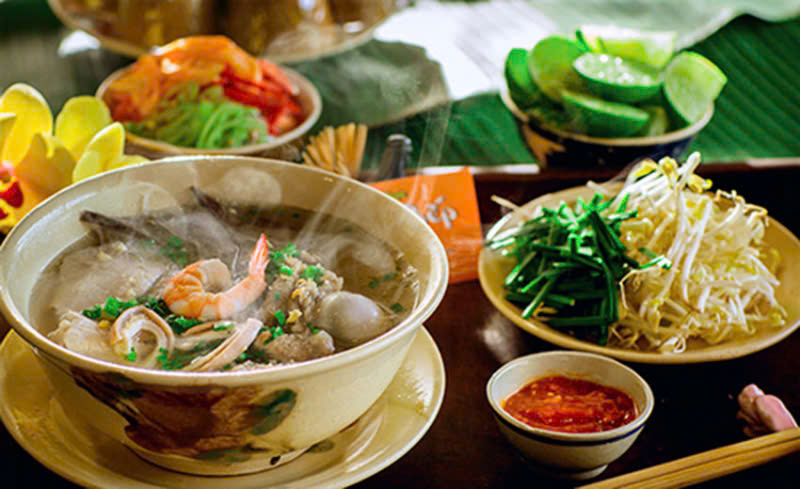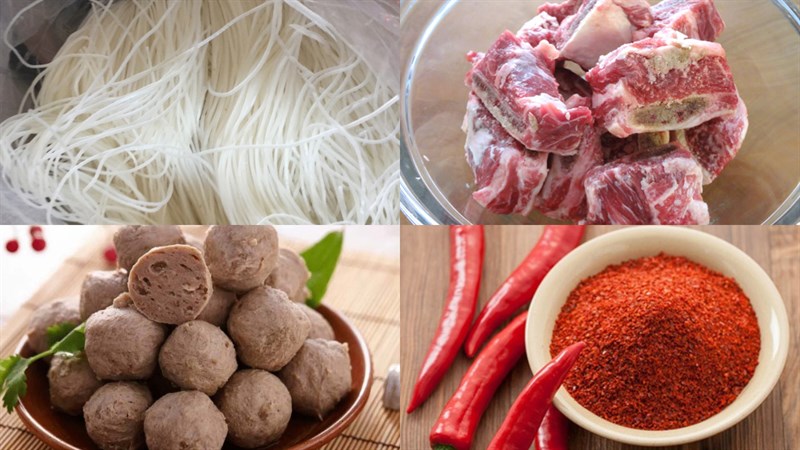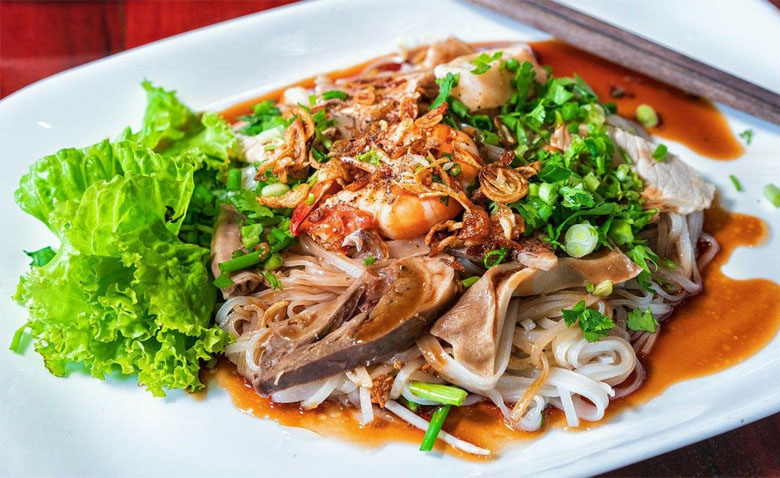Hủ Tiếu Sa Đéc
1. Introduction
Hủ tiếu Sa Đéc is a well-known noodle soup originating from the charming town of Sa Đéc in Đồng Tháp province, southern Vietnam. While hủ tiếu can be found throughout the Mekong Delta, the Sa Đéc version is especially famous for its soft, chewy noodles and richly flavored broth. This dish represents the culinary pride of the region and has been loved by generations.
2. Noodle Characteristics
What makes Hủ tiếu Sa Đéc unique is its noodle texture. Unlike hủ tiếu Nam Vang (Phnom Penh-style), the noodles in Sa Đéc are slightly thicker and chewier, yet still soft. These noodles are traditionally handmade from high-quality rice flour in local craft villages, giving them a smooth, elastic feel that absorbs broth beautifully without getting soggy.
3. Broth and Toppings
The broth is the heart of any noodle soup, and in Sa Đéc, it’s made with great care. The soup is:
-
Simmered for hours using pork bones to create a sweet and savory flavor.
-
Clear, but rich and aromatic.
Typical toppings include:
-
Sliced pork (lean and liver)
-
Pork meatballs or minced pork
-
Shrimp
-
Quail eggs
-
Fried shallots
-
Fresh chives or scallions
For those who prefer a dry version (hủ tiếu khô), the noodles are served separately with a flavorful soy-based sauce, and the soup comes on the side.
4. Accompaniments and Garnishes
Hủ tiếu Sa Đéc is often served with:
-
A basket of fresh herbs and vegetables such as bean sprouts, lettuce, and garlic chives
-
Chili slices, lime wedges, and pickled garlic
-
A small bowl of chili sauce or soy sauce for dipping meat
These fresh elements add texture and brightness to the dish, allowing diners to customize each bite.
5. How to Enjoy
There are two ways to enjoy Hủ tiếu Sa Đéc:
-
Hủ tiếu nước (noodle soup): All ingredients are served in a bowl of hot broth.
-
Hủ tiếu khô (dry noodles): Noodles and toppings are served dry with a separate bowl of soup, allowing you to mix sauces and adjust the flavor to your liking.
Both versions highlight the fresh, balanced flavors typical of southern Vietnamese cuisine.
6. Cultural and Local Significance
Sa Đéc is not only known for its flower gardens but also for its culinary heritage. The production of hủ tiếu noodles is a traditional craft passed down through generations. Many families in Sa Đéc have been making rice noodles for decades, contributing to both local cuisine and the economy.
Visitors to Sa Đéc often seek out a steaming bowl of hủ tiếu as part of their travel experience. It’s more than just a dish – it’s a taste of the town’s history, hospitality, and everyday life.




